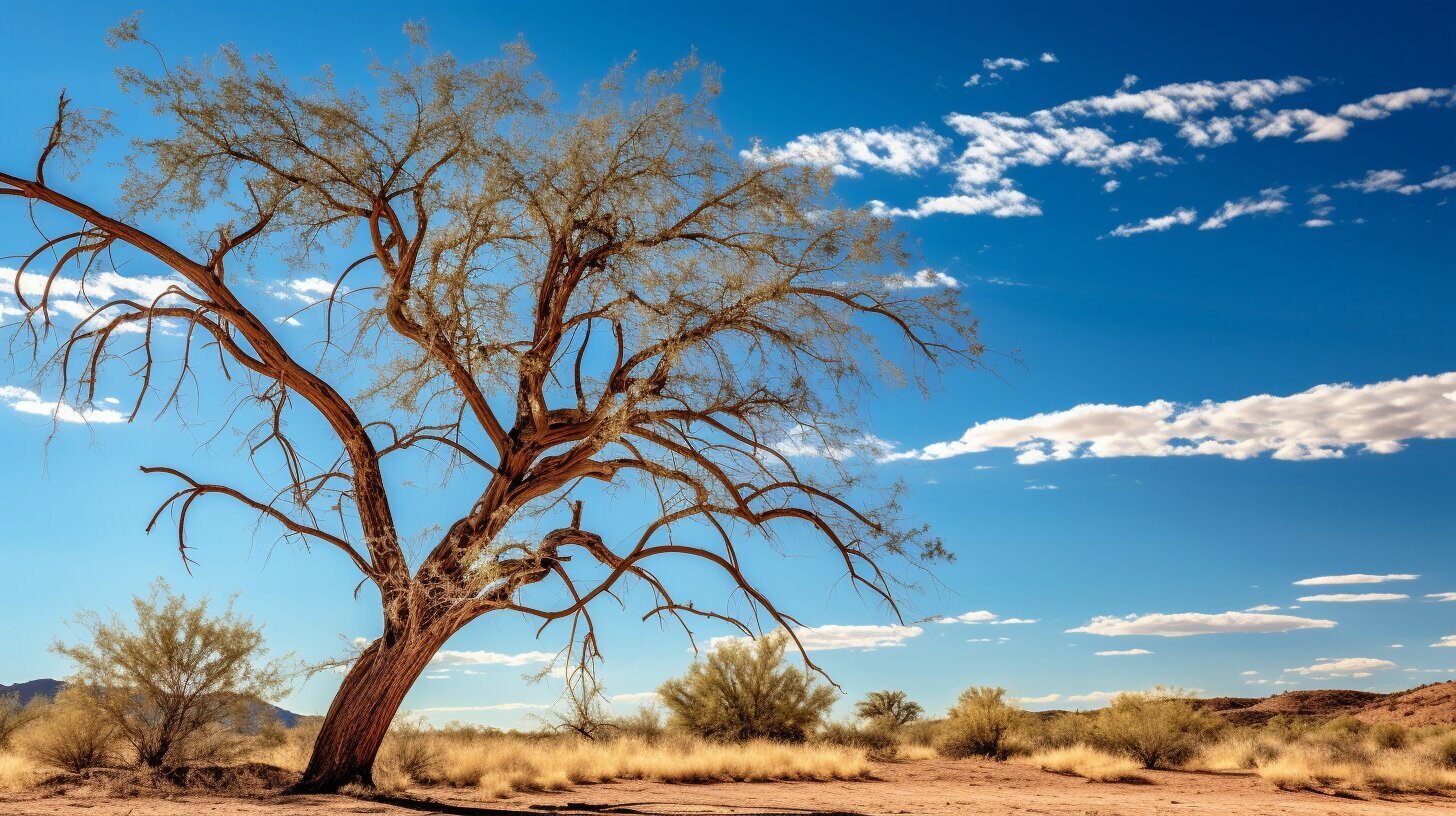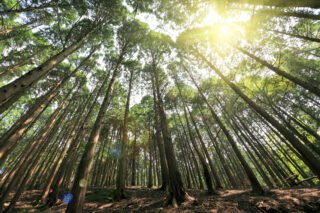Table of Contents
- The Importance of the Blue Palo Verde in Arizona’s Ecosystem
- The History and Cultural Significance of the Blue Palo Verde
- Types of Palo Verde Trees in Arizona
- The Blooming Phenomenon of the Blue Palo Verde Tree
- The Conservation Efforts for the Blue Palo Verde and its Habitat
- FAQ
- What is the Arizona State Tree?
- What are some key characteristics of the Blue Palo Verde?
- Why is the Blue Palo Verde important in Arizona’s ecosystem?
- How did the Blue Palo Verde become the state tree of Arizona?
- Are there different types of Palo Verde trees in Arizona?
- Why do Blue Palo Verde trees bloom with vibrant yellow flowers?
- What conservation efforts are in place for the Blue Palo Verde and its habitat?
Welcome to this fascinating article about the Blue Palo Verde, the official state tree of Arizona. This small tree is native to the Sonoran desert in southern Arizona and holds great significance to the region’s ecosystem and cultural heritage. Join me as we explore the features, characteristics, and cultural importance of this unique tree.
The Blue Palo Verde, also known as Cercidium floridum, is a species of palo verde tree that produces beautiful bright yellow flowers. Its name “palo verde” is Spanish for “green stick” and refers to the tree’s green bark which helps it photosynthesize even in drought conditions. This small tree can grow up to 30 feet tall and has a deep root system, allowing it to access groundwater.
The Blue Palo Verde was designated as the official state tree of Arizona in 1954. Its name indicates that these trees can use the chlorophyll produced by the leaves to photosynthesize, resulting in a yellow-green color. The mature Blue Palo Verde can photosynthesize effectively, producing clusters of bright yellow flowers that bloom in the spring.
Arizona is home to two species of palo verde trees, the Blue Palo Verde and the Foothill Palo Verde (Parkinsonia microphylla). Both species share similar adaptations to the desert environment, but are distinguishable by their unique features.
Key Takeaways
- The Blue Palo Verde is the official state tree of Arizona.
- The tree is native to the Sonoran desert and can grow up to 30 feet tall.
- Blue Palo Verdes have green bark that helps them photosynthesize during drought conditions.
- Arizona has two species of palo verde trees, the Blue Palo Verde and the Foothill Palo Verde.
- The Blue Palo Verde produces clusters of bright yellow flowers that bloom in the spring.
The Importance of the Blue Palo Verde in Arizona’s Ecosystem
As the official state tree of Arizona, the Blue Palo Verde plays a crucial role in sustaining life in the Sonoran desert ecosystem. Native to this arid landscape, the tree has adapted to withstand the harsh conditions of the region, providing essential resources for various species of wildlife and plants.
One of the essential features of the Blue Palo Verde is its ability to photosynthesize with its unique green stick-like bark. This adaptation allows the tree to generate food for itself even during drought conditions when other plants struggle to survive.
The tree’s deep root system extends far into the ground, tapping into groundwater sources that are inaccessible to other vegetation. This means that the Blue Palo Verde can survive and provide resources for the ecosystem even when water is scarce.
The bright yellow flowers of the Blue Palo Verde also play a crucial role in the ecosystem. They attract pollinators such as bees, butterflies, and hummingbirds, which contribute to the fertilization and survival of other plant species in the area.
The Blue Palo Verde also serves as a crucial food source for several species that inhabit the Sonoran desert, including the Pima, who traditionally used the seeds as a food source. The tree’s seed pods and foliage also support a diverse range of mammals, reptiles, amphibians, and birds such as the Cactus Wren.
In summary, the Blue Palo Verde is an integral part of the Arizona ecosystem, contributing to the sustainability of the fragile desert landscape and the survival of thousands of species.
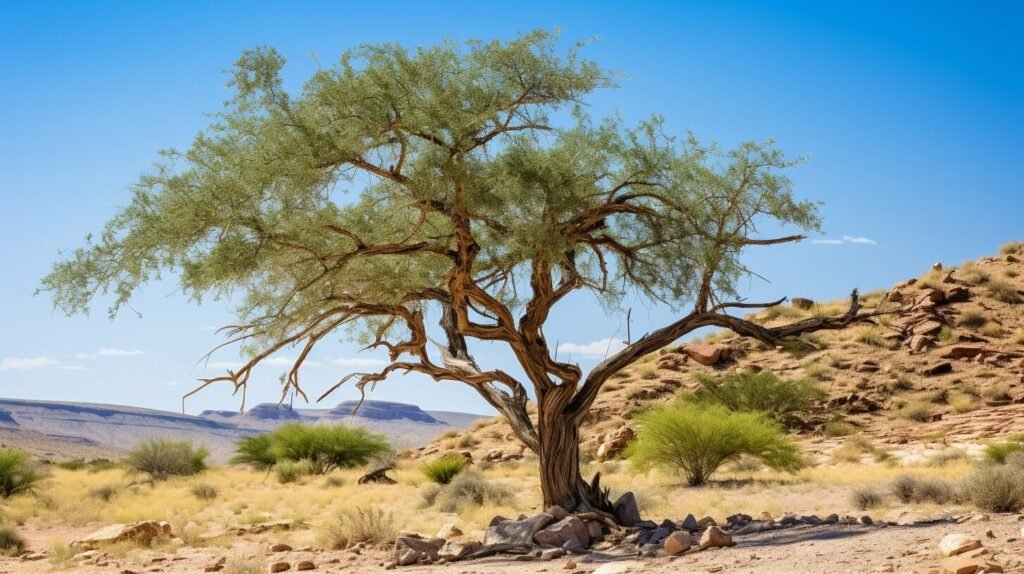
As the official state tree of Arizona, the Blue Palo Verde is a remarkable tree known for its unique characteristics. It is a small tree that can grow up to 30 feet tall, with clusters of bright yellow flowers that bloom in the spring. It is also known for its green stick-like bark, which allows it to photosynthesize and produce energy even during drought conditions when other trees struggle.
The Blue Palo Verde belongs to the family of Cercidium, which includes two species found in Arizona – the Blue Palo Verde (Parkinsonia florida) and the Foothill Palo Verde (Parkinsonia microphylla). The Blue Palo Verde is native to the Sonoran desert and is commonly found in southern Arizona, particularly in Tucson and the Sonora region of Mexico.
The tree can be either a large shrub or small tree and is aptly named “Palo Verde” meaning “green stick” in Spanish, due to its distinct green bark. The bark contains chlorophyll, which allows the tree to produce its food through photosynthesis. Its leaves are small and often fall off during droughts, but the tree can still continue to photosynthesize using its bark.
The Blue Palo Verde is also known for its deep root system, allowing it to access groundwater even in harsh desert conditions. Its yellow-green seed pods serve as a food source for many desert animals such as mammals, reptiles, and amphibians, while its foliage provides shelter and nesting material for the Cactus Wren.

The Blue Palo Verde is a resilient tree that has adapted to the arid conditions of the Sonoran desert. Its ability to survive and thrive in such conditions makes it an important part of the ecosystem. As the only species of tree that can survive in the harsh desert washes, it plays a vital role in the protection of the fragile ecosystem that relies on it for survival. Its clusters of bright yellow flowers and unique green bark make it a stunning sight to behold, a testament to the beauty and resilience of the Arizona landscape.
The History and Cultural Significance of the Blue Palo Verde
As the official state tree of Arizona since 1954, the Blue Palo Verde holds significant cultural and historical value in the region. This tree’s unique name comes from the Spanish words “palo verde” which means “green stick.” It refers to the tree’s characteristic green bark that contains chlorophyll, enabling the tree to photosynthesize and produce sugar.
The indigenous Pima and Tohono communities utilized Palo Verde seeds as a significant food source. The seeds were ground and used in mortars to make a flour that could be used to make bread. Moreover, Native Americans used the bark and wood of the Cercidium species for medicinal purposes as well.
The Blue Palo Verde was recognized as the official state tree of Arizona after approved House Bill 227 was signed into law by Governor John Howard Pyle. The bill was passed by the Arizona House of Representatives in recognition of the tree’s importance as a food source and for its ability to provide shelter and attract pollinators, such as the Cactus Wren.
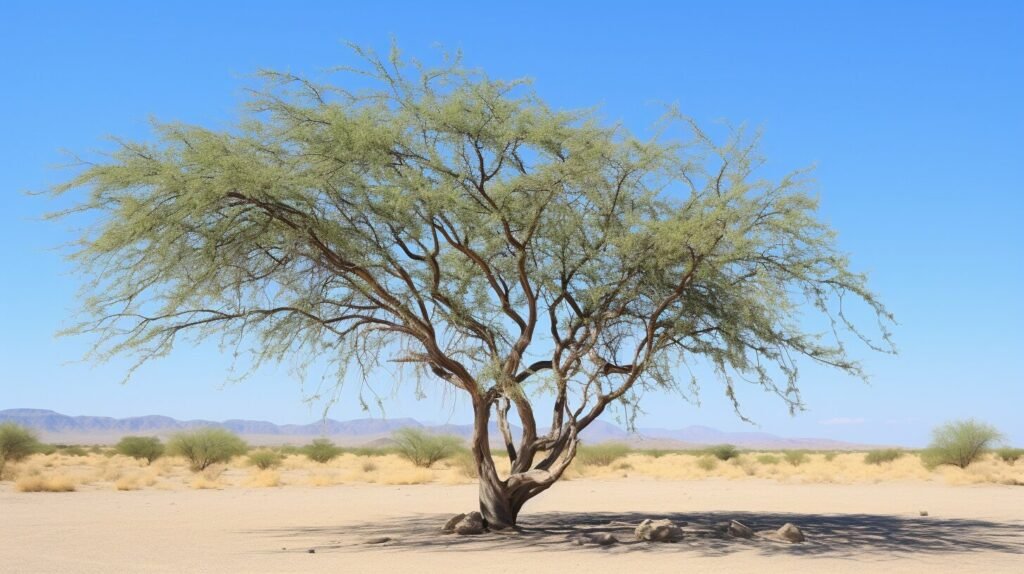
Aside from its cultural significance, the Blue Palo Verde has played a significant role in developing our understanding of photoautotrophs, a group of organisms that can produce their food through photosynthesis. Palo Verde trees have adapted to the harsh, arid conditions of the Sonoran desert, where annual rainfall is scarce. They have evolved a unique capability to use photosynthesis in their bark, which allows them to survive long periods without water.
With deep roots that allow them to access groundwater, Blue Palo Verde trees have been instrumental in nurturing and sustaining life in the Sonoran desert. As a food source for mammals, reptiles, and amphibians, they play a crucial role in ecological systems. They also contribute to the region’s rich biodiversity and provide a habitat for pollinators, such as the Cactus Wren.
The Blue Palo Verde’s cultural significance and ecological importance make it a valuable and unique part of Arizona’s natural heritage. It is an iconic symbol of the state’s arid landscape and a reminder of its deep historical and cultural roots.
Types of Palo Verde Trees in Arizona
Arizona is home to two primary species of Palo Verde trees, each with unique characteristics and adaptations to the arid environment. The Blue Palo Verde (Parkinsonia florida) is the official state tree of Arizona and is known for its bright yellow flowers and green stick-like bark that allows it to photosynthesize. The Foothill Palo Verde (Parkinsonia microphylla) is a large shrub or small tree with small spines and yellow flowers that bloom in clusters.
Both species of Palo Verde are native to the Sonoran desert and are categorized under the family Cercidium. The name ‘Palo Verde’ is Spanish for ‘green stick’ which refers to the tree’s chlorophyll in its bark, allowing it to photosynthesize and produce sugar. Both species thrive in desert scrub, rocky slopes, and Bajadas where they rely on groundwater for survival.
Palo Verdes have a number of characteristics in common, including their deep root system which helps them access water in arid conditions. They are also an important food source for mammals, reptiles, and amphibians, and serve as a habitat for the Cactus Wren, which is Arizona’s state bird.
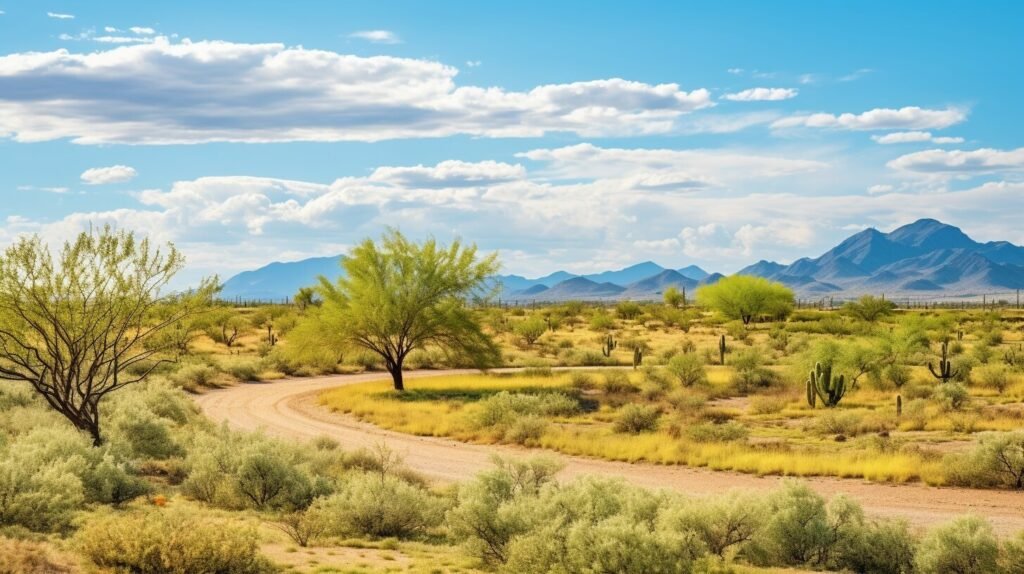
The Blue and Foothill Palo Verdes play a critical role in sustaining life in the Sonoran desert and are an important part of Arizona’s ecosystem.
The Blooming Phenomenon of the Blue Palo Verde Tree
The Blue Palo Verde tree is synonymous with the Sonoran desert in Arizona. One of the most stunning and anticipated events in the region is the blooming of the Blue Palo Verde’s bright yellow flowers that adorn the tree in clusters. This blooming period is a remarkable phenomenon that has captivated the hearts of Arizonans for decades.
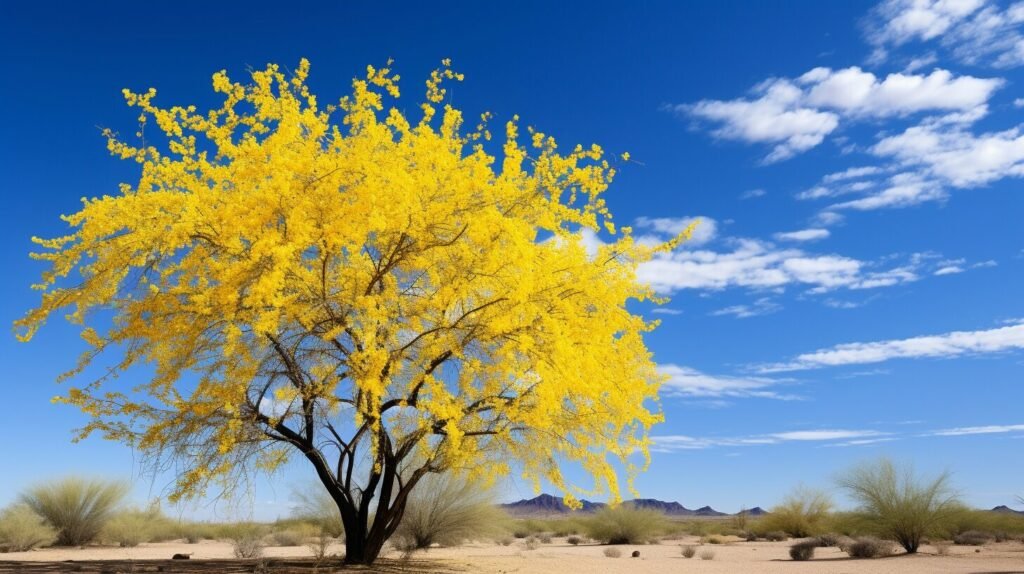
The Blue Palo Verde tree usually blooms between mid-March and early April, which coincides with the region’s warm weather and longer daylight hours. During this period, the tree transforms into a picturesque yellow and green floral spectacle. The blooming lasts for about two to three weeks, depending on the species, climatic conditions, and other ecological factors.
The blooming of the Blue Palo Verde tree serves a crucial ecological purpose. The blooming attracts a host of pollinators, including bees, hummingbirds, and the Cactus Wren, which aid in fertilization and seed production. This process ensures the survival of the species and contributes to the overall biodiversity of the ecosystem.
The Arizona House of Representatives recognized the importance of the Blue Palo Verde tree and designated it as the official state tree of Arizona in 1954. The Blue Palo Verde tree’s significance goes beyond its aesthetic value – it is a vital component of the Sonoran desert’s ecosystem and a beloved symbol of Arizona’s natural beauty.
The Conservation Efforts for the Blue Palo Verde and its Habitat
As the official state tree of Arizona, the Blue Palo Verde holds a significant place in the hearts of Arizonans. However, like many species that call the Sonoran desert home, it faces numerous conservation challenges. Conservation efforts are crucial to preserving this iconic tree and its delicate ecosystem.
One of the primary threats to the Blue Palo Verde and its habitat is human activity. The expansion of urbanization and agriculture puts pressure on the already limited resources in the Sonoran desert. Measures are being taken to ensure that habitat destruction and fragmentation are minimized. Conservation organizations are working with local communities to promote sustainable land use practices that benefit both humans and the environment.
The Blue Palo Verde’s adaption to arid conditions, such as its ability to photosynthesize with its green stick-like bark and deep root system, make it vulnerable to droughts and climate change. Efforts are underway to increase the tree’s resilience to droughts, which includes planting the species in areas with access to groundwater.
Conservationists are also examining the Blue Palo Verde’s relationship with other flora and fauna in its ecosystem. Researchers are investigating the impact of fire on the vegetation and the effects on the Blue Palo Verde and its habitat. They are also studying the role of pollinators, such as the Cactus Wren, in ensuring the tree’s survival.
In conclusion, the Blue Palo Verde plays a critical role in the Sonoran desert ecosystem. The conservation efforts for the species and its habitat will help ensure its survival and protect the biodiversity of the region. By working together, we can safeguard the Blue Palo Verde and preserve the unique beauty of this distinctive state tree.
FAQ
What is the Arizona State Tree?
The Blue Palo Verde is the official state tree of Arizona.
What are some key characteristics of the Blue Palo Verde?
The Blue Palo Verde is a small tree native to the Sonoran desert. It has clusters of bright yellow flowers and can photosynthesize with its green stick-like bark.
Why is the Blue Palo Verde important in Arizona’s ecosystem?
The Blue Palo Verde plays a crucial role in sustaining life in the arid landscapes of Arizona. It provides essential resources for wildlife and acts as a food source for species like the Cactus Wren.
How did the Blue Palo Verde become the state tree of Arizona?
The Blue Palo Verde was designated as the official state tree of Arizona in 1954 through House Bill 227, approved by the Arizona House of Representatives.
Are there different types of Palo Verde trees in Arizona?
Yes, Arizona is home to two primary species of Palo Verde trees – the Blue Palo Verde and the Foothill Palo Verde.
Why do Blue Palo Verde trees bloom with vibrant yellow flowers?
The blooming of the Blue Palo Verde is a natural phenomenon that occurs in the Sonoran desert. The bright yellow flowers add a burst of color to the arid landscape.
What conservation efforts are in place for the Blue Palo Verde and its habitat?
Conservation initiatives aim to protect the Blue Palo Verde and its fragile ecosystem. Efforts include preserving biodiversity and maintaining the tree’s habitat, which is crucial for various species of mammals, reptiles, amphibians, and birds like the Cactus Wren.

